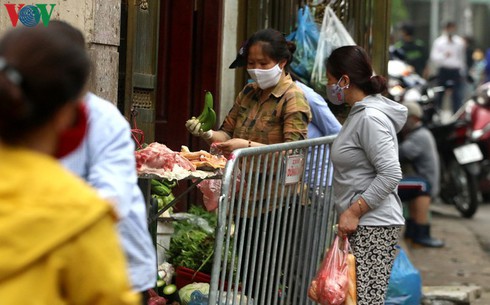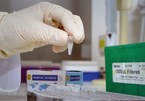 |
| Wet crowded markets pose a high risk of virus contamination |
Assoc. Prof. & PhD Nguyen Huy Nga, former head of the General Department of Preventive Medicine under the Ministry of Health, said that is unsurprising that a number of COVID-19 cases have been detected sporadically due to it being severely difficult to control the underlying pathogens that lead to the COVID-19.
The expert stated that there are three main sources of infection which are currently putting communities at risk. These dangers can come from COVID-19 hotspots which have yet to pass the 14-day mark for being virus free as required. Alternatively, they can originate from symptomless individuals returning from epidemic-hit areas, or from those who illegally enter the country through its various border crossings.
“We have to manage quarantine work effectively as tens of thousands of Vietnamese nationals have already returned or are in the process of returning in the near future. Otherwise, the disease is likely to break out again if cross-contamination occurs in quarantine facilities or suspected cases dodge quarantine,” Assoc. Prof. Nga told Tien Phong newspaper.
Currently, it is a positive sign that Vietnam has been able to successfully bring the epidemic under control with no new cases being detected among the community over the past 10 days. Despite this, the expert warned that reopening restaurants and bars following the end of the social distancing period could greatly increase the risk of community infection due to the virus’s ability to spread through people coming into contact with infected surfaces or objects such as cutlery, plates, cups, dishes, and tables.
Therefore, Assoc. Prof. Nga recommends that when people eat out, dining tables should be thoroughly cleaned with disinfectant solutions, whilst customers should wash their hands with soap before eating. Moreover, it is also necessary for people to keep a distance between each other in order to avoid the risk of transmission through direct contact.
The health expert went on to advise people to avoid talking while eating as it could increase the risk of spreading the COVID-19 among the community.
Additionally, when going shopping, people must follow requirements on wearing masks, frequently washing their hands with an antiseptic solution, maintaining a safe distance from staff and other customers, whilst also attempting to use contactless forms of payment as much as possible. Upon returning home, individuals should wash their hands with soap and water again to avoid carrying the virus and inadvertently infecting others.
Meanwhile, Deputy Minister of Health Nguyen Thanh Long raised concerns regarding the possibility of re-infection as there is currently no vaccine or medicine to combat the virus. The Deputy Minister cited lessons from Japan, Singapore, and the Republic of Korea as examples of what a second wave of the outbreak could look like if it hit Vietnam.
“Therefore, we cannot afford to be complacent in any circumstances, instead we should pool all our resources together and put them on standby,” Deputy Minister Long stated.
At present, epidemiologists are trying to find out why a small number of recovered patients have subsequently tested positive for the COVID-19 again.
PhD Pham Quang Thai, deputy head of the Infectious Diseases Control Department under the Central Institute of Hygiene and Epidemiology, played down the overall threat to public health.
“With regard to re-infected cases, the Institute of Hygiene and Epidemiology will perform additional tests to see if patients have antibodies or not or if the virus multiplies. So far, there has been no evidence to prove that patients may be infected again after making a recovery,” said Thai. VOV

WHO, UK certify Vietnam’s COVID-19 test kit
The World Health Organisation (WHO)'s medical product evaluation agency has sent a letter informing the certification of the SARS-CoV-2 testing kit LightPower iVA SARS-CoV-2 1st RT-rPCR.

Number of COVID-19 cases remains unchanged over last two days
The number of COVID-19 cases in Vietnam still stood at 270 as of 6pm of April 26 with no new infections reported over the last couple of days, according to the national steering committee of COVID-19 prevention and control.
 Despite the novel coronavirus epidemic (COVID-19) brought under control in Vietnam, a second wave of the virus is likely to break out at any time if a complacent attitude creeps into public behaviour, warns a senior health expert." itemprop="description" />
Despite the novel coronavirus epidemic (COVID-19) brought under control in Vietnam, a second wave of the virus is likely to break out at any time if a complacent attitude creeps into public behaviour, warns a senior health expert." itemprop="description" />